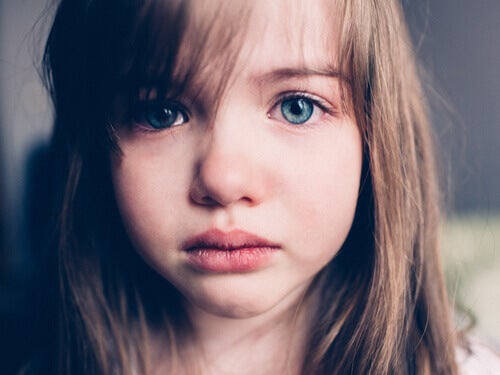No one is safe from sadness, not even our little ones. The loss of someone, an unforeseen, a poorly seized opportunity?Sadness in children is no exception. Therefore, we must be present when they need us, educating them to have awareness and emotional control is the key so that they can then express how they feel.
The film “Inside Out”, translated as “Funny Mind”, clearly shows the importance of basic emotions in our lives. In particular, the importance of recognizing and expressing sadness. Because, like fear, joy or anger, knowing how to channel discouragement is something we should be taught from a young time.
- When we meet someone who seems sad.
- We often tend to run away in the opposite direction.
- We seem afraid to get infected and.
- Therefore.
- We prefer to be close to those who always have a smile on their face.
- In both children and adults it is an essential and necessary emotion.
- Without it we would have no idea what joy is.
Although it is more common in adulthood to experience this emotion because of the difficulties we face, it doesn’t happen as often in children. It is rare to find a 5-year-old boy sitting alone on a bench, looking lost or immersed in his inner life. His innocence, his precarious intellectual maturity and his concerns, which are only playful, are supposed to guarantee him unwavering joy. But it may not be.
This is not to say that children have no right to feel bad. Yes, they do, and in fact it is more common than we think; practice at times and inescapable in many other cases. For example, can you feel melancholy about the loss of a family member or your pet, the change of school, a small disagreement with a colleague?
Therefore, the best way to help them is to talk to them about sadness, teach them to identify and understand it, we have to make them understand that it is better to recognize than to hide, that we all feel at some point. point and that it’s good to embrace that emotion to calm her down and let her go.
Like adults, young children can also express their emotional state in different ways; when they have fun and are happy, it is normal for them to laugh, play and look very happy; when they are afraid, they often stand still and silent until fear subsides. . But when they are sad, the way they should express this emotion is not so clear.
Sometimes, they can even have opposite behaviors on the same day that mask their true mood. Let’s look at examples of how sadness manifests itself in children:
Thus, to detect when sadness overwhelms them, parents and teachers should be especially attentive to changes in their behavior and emotional state.
Once we detect an unusual or excessive behavior in the child, it is good to ask why it is so, surely he will not know how to say it or he will simply not want to and will prefer to close, but we already know that children, in their early stages of development, are like sponges .
Children learn emotional expressions from their parents, as they are also their emotional reference, so it is convenient for adults to explain that everyone feels sad at some point in life, that it is normal and that dad, mom, grandmother or uncle sometimes feels it. They must also explain that it is an emotion that happens when one is able to understand it, face it and accept it.
Through photographs of faces, drawings or simply talking about sadness you can enhance your ability to recognize it, once you know how to identify it we can teach you how to deal with it through examples that we can stage ourselves.
Unfortunately, concealment is more fashionable than adaptation. From a very young time we are taught to change a tear for a smile and to remove sadness, however, this does not take away this emotion, it only burys it in such a way that, when it is reborn, it does so more strongly. .
As we can see, the role of those around her is critical to her understanding that she should not be afraid to be sad, nor to recognize that she feels that way. Sadness in children should not be ignored.

